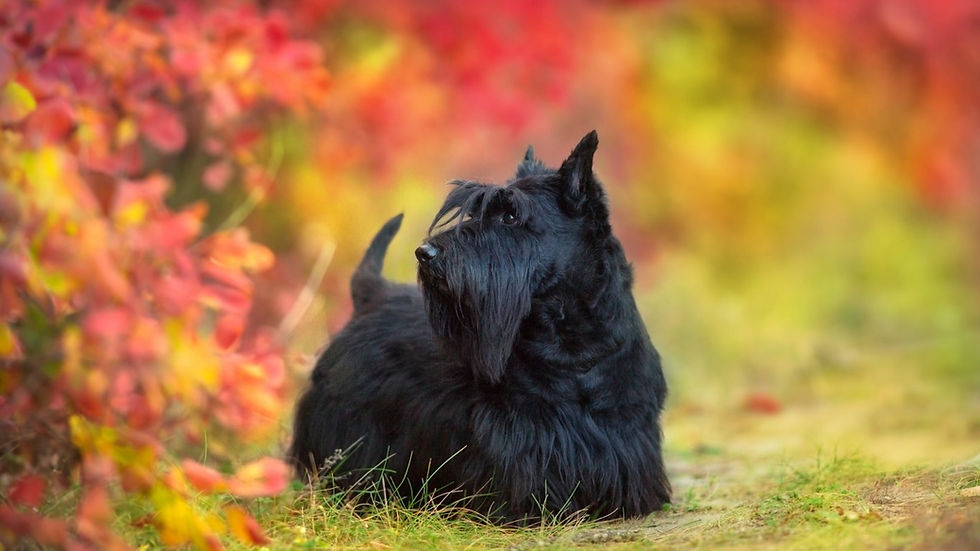Click the tartan to view its entry in The Scottish Registers of Tartans which includes registration details, restrictions, and registrant information.
Unregistered tartans may link to one of the web's online design environments for similar information.
For any questions about reproduction of designs or weaving of these tartans, please contact the registrant directly or via this website.
Harvest Season and the Fall Equinox
“This is not a place where landscape halts—
hills pearl onward, uniformly dressed
from wheatgrass feet to wheatgrass-covered crests,
each a drop of water in a wave of salt.
Their ripples froze beneath the Cascade vault
as glaciers disappeared into the West...”
~ Palouse 1, Brian Kohl
Inspired by a photograph of the rolling landscape near Pullman in Whitman County, Washington, this tartan pays tribute to the generations of men and women who braved the steep, undulating grades of the Palouse revion to bring in the harvest. The Palouse takes its name from the Indigenous Palus people, who lived along the lower Snake River; their name was later adopted by French traders and settlers to describe the region’s distinctive grassy hills. These hills are formed of deep loess soil blown in by ancient winds, creating slopes so steep that early farmers had to work them with teams of horses tethered for safety, and even today modern combines must carefully contour the land. Known for its extraordinary fertility, the Palouse is one of the world’s leading producers of wheat and lentils, and in every season the hills offer a new palette of color — lush green in spring, rippling gold at harvest, and dusted with snow in winter. The tartan’s colors reflect this harmony: the cloud-dotted blue skies above and the golden, groomed stubble of freshly combined fields below — a lasting homage to both the natural grandeur and the hard-won agricultural heritage of the Palouse.
Although this editor could not locate the original inspiration for this tartan, this beautiful photograph by Craig Goodwin, whose work specializes in capturing images of the Pacific Northwest and surrounding regions, shows the unusual rolling landscape. 🤎 💛 🤍 💙 💛 🤎 🌾 🌾 🌾
The Palouse has always been a land of stories. Long before wheat fields covered the hills, the Palus people made their home along the rivers that now carry their name. They lived with the rhythms of the land—fishing, gathering roots and berries, and moving with the seasons. They were also famous horsemen, known for their beautiful spotted horses that later became the Appaloosa. For them, these rolling hills weren’t just scenery—they were part of their way of life and belief.
When traders, missionaries, and settlers began arriving in the 1800s, the Palouse became a place of change and conflict. Land was taken, treaties were broken, and the old ways of life were disrupted. Yet the Palus and their neighbors showed strength and resilience, standing alongside Chief Joseph during the Nez Perce War. Even the name “Palouse” carries pieces of this layered history—it comes both from the people themselves and perhaps from French fur traders who saw the vast grasslands as a pelouse, or meadow.
By the late 19th century, immigrant farmers—many from Scandinavia, Germany, and Ireland—were carving out new lives on the steep slopes. The hills were hard to work, but the soil was rich, and before long the Palouse was known as some of the best dryland wheat country in the world. Communities grew around the rhythm of planting and harvest, and barns, grain elevators, and country churches became landmarks against the wide horizon. County fairs, church suppers, and school events pulled people together and gave shape to a rural culture that was as much about community as it was about survival.
Pullman took on a different role when Washington State College was founded in 1890. What started as an agricultural school grew into a cultural and educational hub, balancing farm life with lectures, music, and sports that connected the region in new ways. Alongside the University of Idaho just across the border, the Palouse became known not only for farming but also for learning and exchange.
Today, the Palouse is remembered for both its beauty and its culture. The rolling patchwork fields, green in spring and gold at harvest, draw photographers and painters from around the world. Farmers’ markets, rodeos, and small-town festivals keep old traditions alive, while new generations find their own ways of belonging here. The Palouse is still a place where the land and the people shape each other, carrying forward a story of resilience, community, and deep connection to the hills.
For more on the Palus people, click the beautiful wheat fields of toay's region.









